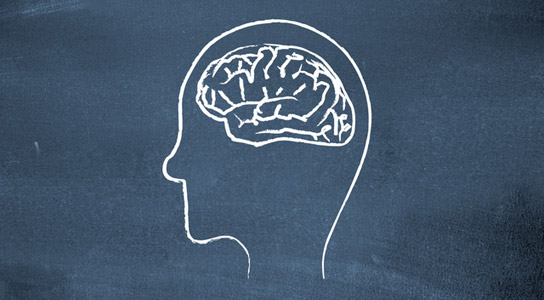
Researchers found a way to eliminate humans’ optimism bias by using a magnetic field on a brain region called the left inferior frontal gyrus (IFG). Credit: Lasse Kristensen
Humans will embrace good news and attenuate bad news. People tend to overestimate their odds in a number of different things, while underplaying the risks of cancer, divorce or unemployment. Researchers from the University of College London (UCL) have found a way of removing the optimism bias that humans suffer from by using a magnetic field on a small region of the brain called the left inferior frontal gyrus (IFG).
The scientists published their findings in the Proceedings of the National Academy of Sciences. Much of the previous evidence of this was based upon decades of correlations. This is a rare example of a direct manipulation with a result.

The optimism bias isn’t something new, it was recognized decades ago and seems to exist fairly uniformly among humans of all ages. Tali Sharot, of the UCL, has been studying this bias since 2007. Previously, she used a functional magnetic resonance imaging scan (fMRI) and had linked the IFG to people’s ability to update their beliefs with new information.
fMRI only gave a correlation. To show causation, they needed to manipulate these brain regions and alter how people learn from blood and bad information. The scientists used a transcranial magnetic stimulation (TMS) to temporarily shut off parts of the brain to disrupt the right IFG, the left IFG, or an unrelated area in 30 volunteers. Then, the researchers asked the volunteers to estimate their chances of experiencing 40 different dooming scenarios, from Alzheimer’s to robberies.
Optimism bias was working well among volunteers receiving TMS to the right IFG or the unrelated region, but it vanished in people who had their left IFGs disrupted. They gave equal weight to statistics showing that events were either more or less likely than they had expected. TMS didn’t affect other traits that could have explained the volunteers’ behavior, such as emotional arousal or negativity.
With the left area shut down, people were just as likely to adjust their beliefs based on good news, but were better at adjusting their beliefs based on bad news. Such research could reveal the mechanisms of depression. More research needs to be carried out to further validate these findings.
The scientists also found some individual variations. Even with their left IFG disrupted, 40% of the volunteers still showed the bias. This could mean that some people have a greater or lesser ability to resist cognitive biases. Targeting this area could help boost optimism in people who tend to lack it.
[via PNAS, chalkboard image by Lasse Kristensen]
Reference: “Selectively altering belief formation in the human brain” by Tali Sharot, Ryota Kanai, David Marston, Christoph W. Korn, Geraint Rees and Raymond J. Dolan, 24 September 2012, Proceedings of the National Academy of Sciences.
DOI: 10.1073/pnas.1205828109









Be the first to comment on "Optimism Bias Disrupted With a Small Magnetic Field"